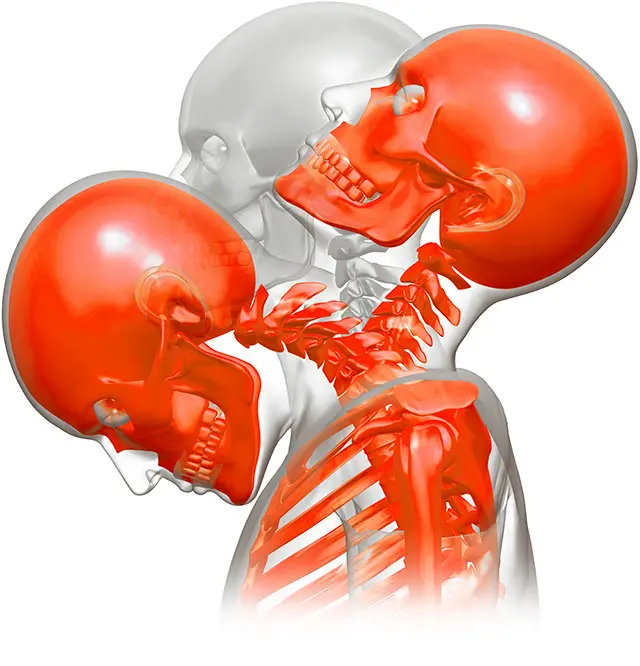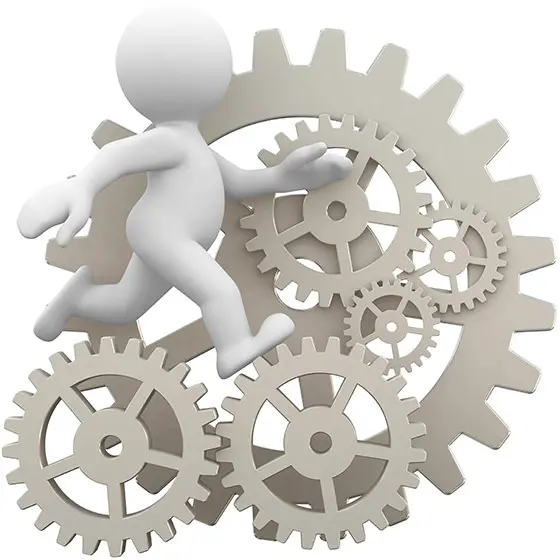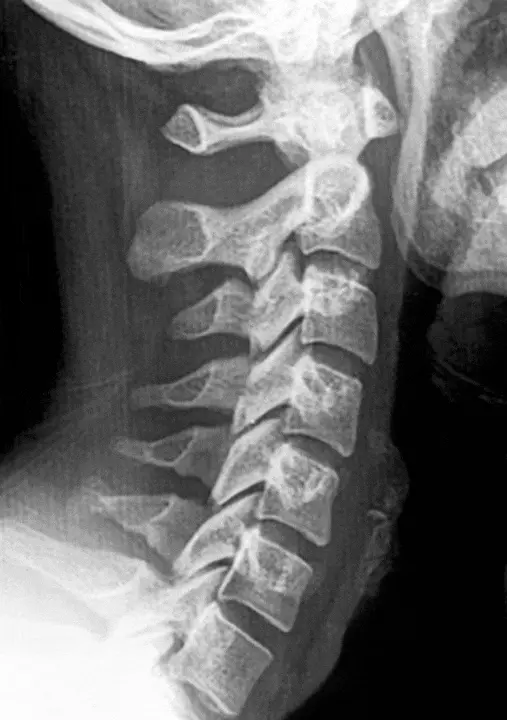Chronic pain after whiplash injury?

A whiplash injury can cause a misalignment of the Atlas vertebra or aggravate a pre-existing misalignment.
Whiplash' is an injury in which the cervical spine undergoes a violent and unexpected forward and backward movement. Whiplash can occur during a car accident or as a result of a seemingly trivial fall while at work or while playing sports.According to the US Occupational Safety and Health Administration, 47% of children fall and hit their heads before they turn one. Children aged 2-5 have already fallen at least 200 times, while by the age of 10, they have suffered more than 1500 injuries of various kinds.
Although it is said that what doesn't kill you makes you stronger, sometimes you carry the after-effects of a trivial fall with you for the rest of your life.
Why do some people not recover after a whiplash injury?
As you read on, you will discover why, after a whiplash injury, some people are no longer the same and even normal daily activities become a burden. In extreme cases, it is no longer possible to do one's job properly, one becomes withdrawn and one's social life is severely affected.What can be diagnosed after a whiplash injury is possible structural damage or stretching of certain ligaments and muscles of the cervical spine. Particularly severe whiplash injuries may involve fractured vertebrae or torn ligaments and soft tissue. Beyond these diagnoses, the real reasons why some people develop chronic pain for no apparent reason after a whiplash injury are largely unknown.
Whiplash: many questions

- Have you suffered whiplash and no doctor is able to determine the cause of the chronic complaints that now plague you?
- Have you exhausted all known diagnostic and therapeutic options without making any progress?
- Has your doctor subjected you to X-rays, MRIs or other types of tests and then assured you that structurally everything is fine?
- Despite your doctor's statements, are your problems getting worse and you are dependent on painkillers or even psychotropic drugs (antidepressants)?
The problem is this: after a whiplash injury, the practice is to look for serious structural damage such as bone fractures or ligament injuries. If the doctor finds no such damage, he will conclude that there is nothing wrong with you. He will therefore consider it sufficient for you to 'take care of yourself and stay at rest', perhaps with the help of a neck brace.
Whiplash trauma does not always cause injuries serious enough to be diagnosed by a doctor. Even apparently insignificant imbalances and misalignments of the cervical vertebrae can often lead to chronic complaints.
The cervical spine: a precision mechanism

The cervical spine can be considered a precision mechanism.
Let's take an example so that you can better understand: you drop a mechanical watch on the floor. You pick it up and it seems to be still intact. Only later do you realise that the watch is always lagging behind. In the complex mechanism, probably one of the balances on which the gears turn, has been deformed and some of the delicate elements that make up your watch are generating more friction than they should.
Something similar can happen to the cervical spine: although whiplash does not deform the vertebrae, they can become misaligned, either in relation to each other or in relation to the skull, altering the balance of the entire spine.
Let's take an example so that you can better understand: you drop a mechanical watch on the floor. You pick it up and it seems to be still intact. Only later do you realise that the watch is always lagging behind. In the complex mechanism, probably one of the balances on which the gears turn, has been deformed and some of the delicate elements that make up your watch are generating more friction than they should.
Something similar can happen to the cervical spine: although whiplash does not deform the vertebrae, they can become misaligned, either in relation to each other or in relation to the skull, altering the balance of the entire spine.
Another problem, which is completely hidden in the examinations that are normally carried out, is the abnormal compression of nerves and blood vessels that the cervical vertebrae can cause, having deviated from their ideal alignment after whiplash. Much more specific investigations, such as an angiography, might reveal the reduction in blood flow, but this is an invasive test that we try to avoid. What makes diagnosis even more difficult is the fact that for a true comparison, measurements before and after the event are needed, whereas in the case of whiplash only measurements after the injury are feasible. The same applies to an echo-Doppler; without a previous reference value, any comparison would be meaningless.
The doctor thus arrives at the verdict that 'the reason for the persistence of the complaints after whiplash injury is unknown' and, even more seriously, that a recovery of the patient can be excluded.
To return to the example of the watch: what would you think of the watchmaker you went to for repair if he told you that the watch was working perfectly and that it was not the CLOCK that was always lagging behind, but YOU who were too far behind? Does the phrase "you should learn to live with your problem" or "your problem is only psychosomatic or imaginary" sound familiar?
You cannot imagine the joy and relief that people feel after the Atlantomed treatment, when the problem they have been carrying around for years suddenly DISAPPEARS! At that moment it becomes clear that they were not the crazy ones.
With Atlantomed, we finally have a method for restoring the balance of the cervical spine after a whiplash injury.
The purpose of Atlantomed is not to treat structural damage (broken bones, torn muscles or ligaments), these must always be diagnosed and treated by a doctor. Furthermore, we do not carry out cervical manipulations and our work is not limited to a simple massage.
What exactly happens during whiplash?
Whiplash victims who, after undergoing all the conventional investigations and treatments, have been unable to make a full recovery, often have the feeling that there is something wrong with the inside of their neck. It's simply not what it used to be! This is true in most cases.
This situation leads to compression of the spinal cord, the vertebral arteries, the carotid artery, various other blood vessels and lymphatic channels: all consequences that are practically impossible to diagnose with the usual instrumental examinations.Once the misalignment of the Atlas has become established, if it is not corrected with an effective technique such as Atlantomed, the typical chronic late symptoms of whiplash may develop.
Late discomfort after whiplash injury

- muscular pains in the neck and shoulders
- heavy headache
- overwhelming headache - tension headache - migraine
- tingling in the face or arms
- tiredness - feeling of absence
- visual disturbances
- hearing problems - tinnitus - tinnitus
- concentration and memory problems
- sleep disorders - chronic fatigue syndrome
- insecurity and anxiety
- irritability - increased sensitivity to noise
- weakness - reduced efficiency
- dizziness - dizziness - feeling unstable
- depression - distress - despondency
- burnout syndrome
Chronic contracture of cervical muscles after whiplash injury
Many people who suffer a whiplash injury are victims of the following unpleasant experience: the pain resulting from the trauma, instead of subsiding, worsens over time and becomes chronic, turning into a nightmare.The cause is not only the particularly misaligned position of the Atlas, but also the excessive tension in the deep cervical muscles, which is created by the trauma and then perpetuated by the body for protective purposes.
The neck muscles, which have been overstressed during the trauma, remain permanently tense and shorten. Even continuous massages and physiotherapy treatments usually fail to relieve these tensions effectively, as the affected muscles are located deep inside and therefore cannot be reached by hand. Head movements are often restricted and cause pain.
Verticalisation of the cervical spine
Straightening of cervical lordosis, loss of cervical lordosis and loss of physiological lordosis are all terms that indicate the same thing, namely a condition in which the cervical spine becomes too straight in relation to its correct physiological shape.After a whiplash injury, the loss of physiological cervical lordosis is very common and is often underestimated. Long-term consequences creep in, with a detrimental impact on health.
If the cervical condition described above continues for a long time, without appropriate intervention to correct it, there is a good chance of ending up with an upright cervical spine. These are some of the consequences:

- headache - dizziness
- deviation of the jaw with grinding and pain
- cervical discopathies
- degeneration of the cervical spine and arthrosis
- narrowing of the vertebral canal (foraminal stenosis)
- formation of osteophytes
- deforming spondylosis - cervical spondylolisthesis
What to do after whiplash
What to do? The AtlantoVib 4 device with vibro-resonance, used to correct the Atlas, comes to the rescue. It reaches the deepest muscles with a very intense and effective massage.Thanks to one or two sessions aimed mainly at the neck, the muscles can finally relax. Once the contractures have been resolved, the head can move freely again, with great relief.
This type of massage, combined with the correction of Atlas misalignment, has already led to a complete remission of whiplash complaints even in cases considered "unresolvable".
Precautions after whiplash

The Atlantomed treatment strains the Atlanto-occipital ligaments and related structures. For this reason, certain precautions are necessary before treatment can be carried out after a whiplash injury.
It is important to carry out an appropriate medical examination with appropriate radiological investigations prior to correction of the Atlas, in order to rule out possible structural damage to the cervical spine caused by the trauma.
Depending on the severity of the whiplash injury, it is advisable to wait one to two months before carrying out the Atlantomed treatment, so that undetected or unrecognisable structural damage is healed as far as possible.
After correction of the Atlas, further manual therapies may be recommended, if still necessary, to rebalance the rest of the spinal column.
It is important to carry out an appropriate medical examination with appropriate radiological investigations prior to correction of the Atlas, in order to rule out possible structural damage to the cervical spine caused by the trauma.
Depending on the severity of the whiplash injury, it is advisable to wait one to two months before carrying out the Atlantomed treatment, so that undetected or unrecognisable structural damage is healed as far as possible.
After correction of the Atlas, further manual therapies may be recommended, if still necessary, to rebalance the rest of the spinal column.
Baccalaureate thesis: Whiplash treatment with Atlantomed
Videointervista colpo di frusta
racconti dopo il riallineamento dell'Atlante
Alcune testimonianze dal forum
- Dom.: Colpo di frusta: 35 anni di dolori cervicali risolti
- Marta: Caduta da cavallo con colpo di frusta
- Gessica: Emicrania post incidente con colpo di frusta
- Lusy: Colpo di frusta: 6 anni di sofferenze e sono rinata
- Laura: Risolte le cefalee dopo trauma cervicale
- Ilaria: colpo di frusta con emicrania
- Altre testimonianze: colpo di frusta
What people say about us
The only ones with over 9000 testimonials and reviews in several languages! Click to access the related platforms and read many opinions, feedbacks, experiences and testimonials after the Atlantomed vibro-resonance Atlas correction. Be wary of imitations.
Letteratura scientifica colpo di frusta

- Linking hypermobility pain disorders with their multi-systemic comorbidities.
- Atlantoaxial rotary subluxation after minor trauma.
- Atlantoaxial rotary subluxation in children.
- Chronic C1-C2 Rotatory Subluxation Reduced by C1 Lateral Mass Screws and C2.
- Connection between the spinal dura mater and suboccipital musculature.
- Occipitocervical Dislocation in Low-Energy Trauma.
- Cervical lordosis: increase cerebral blood flow.
Written by: Alfredo Lerro


